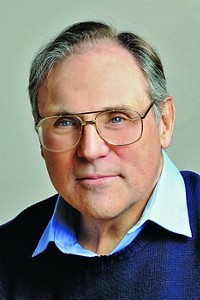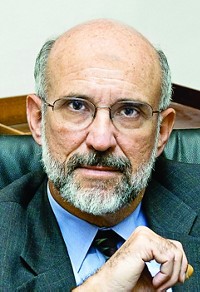Advertisement
Grab your lab coat. Let's get started
Welcome!
Welcome!
Create an account below to get 6 C&EN articles per month, receive newsletters and more - all free.
It seems this is your first time logging in online. Please enter the following information to continue.
As an ACS member you automatically get access to this site. All we need is few more details to create your reading experience.
Not you? Sign in with a different account.
Not you? Sign in with a different account.
ERROR 1
ERROR 1
ERROR 2
ERROR 2
ERROR 2
ERROR 2
ERROR 2
Password and Confirm password must match.
If you have an ACS member number, please enter it here so we can link this account to your membership. (optional)
ERROR 2
ACS values your privacy. By submitting your information, you are gaining access to C&EN and subscribing to our weekly newsletter. We use the information you provide to make your reading experience better, and we will never sell your data to third party members.
Materials
George A. Olah Award in Petroleum or Hydrocarbon Chemistry
Recipients are honored for contributions of major significance to chemistry
by Jeff Johnson
January 21, 2008
| A version of this story appeared in
Volume 86, Issue 3
Sponsored by the George A. Olah Endowment Fund
Israel E. Wachs's knowledge, interest, and ability to control selective catalytic oxidation reactions have led to fundamental discoveries and new product applications in petroleum chemistry. His work has also resulted in better processes, including one with the potential to save the paper industry $300 million per year and eliminate several pollution streams (C&EN, March 25, 2002, page 39).
"These applications," Wachs emphasizes, "were the consequences of fundamental research on selective catalytic oxidation with mixed metal oxides, including supported metal oxides, molecular sieves, heteropolyoxo anions, and bulk metal oxides. I pride myself on developing methodologies to get to the fundamental molecular and electronic structures of the catalytic active sites in mixed metal oxides."
Wachs's career began in 1977 at Exxon Research & Engineering studying selective oxidation catalysis, a major route for upgrading hydrocarbons in the petroleum chemistry field. He was involved in other petroleum chemistry applications, such as hydrocarbon conversion over mixed metal oxide solid acid catalysts, hydrodesulfurization and hydrodenitrogenation of petroleum feeds, and synthesis of hydrocarbons from CO and H2 (Fischer-Tropsch synthesis).
In 1987, Wachs joined Lehigh University's chemical engineering department, where he now holds the G. Whitney Snyder Chair in Engineering.
"Little was known then about selective oxidation of molecules over mixed metal oxide catalysts," he says. "Lehigh's supportive academic environment allowed me to pursue my interests into catalysis of mixed metal oxides."
"Catalyst scientists told me that the Wachs nomination was long overdue," says Bruce E. Koel, a Lehigh chemistry professor who nominated Wachs for the award.
"Many mixed oxide systems have a variety of reactive sites," Koel says. "The question is which sites are controlling the selectivity and the formation of a particular desired product. Wachs's contribution gets to the fundamental questions of how actual catalysts work."
Wachs sought to determine the fundamental molecular and electronic structures and establish connections between structure and catalytic performance.
"Once you figure out the relationship between a material's molecular structure, its catalytic active sites, and its catalytic properties, you can use that insight to design improved catalytic materials. You then have the understanding of the catalytic process at your fingertips and can molecularly engineer advanced catalytic materials for numerous applications," Wachs says.
Wachs used cutting-edge spectroscopic technologies, including Raman, ultraviolet-visible, and infrared spectroscopy, as well as temperature-programmed surface reaction spectroscopy. These technologies allowed him "to see" in real time how molecules and catalytic active sites interact under reaction conditions. Spectroscopic characterization with simultaneous online analysis of the reaction products, recently referred to as Operando spectroscopy, allows direct determination of catalytic structure-activity relationships, he adds.
"We are able to peel things apart to get down to the kernel of what controls the catalytic reaction pathways and kinetics. My love of surface chemistry has guided me to this molecular level of going deeper and deeper into the fundamental mechanisms of heterogeneous catalytic reactions," Wachs says.
In high school, Wachs had a proclivity for science and math. He gravitated to engineering, and he found the chemical engineering discipline most appealing.
After receiving a bachelor's degree in chemical engineering in 1973 from the City College of the City University of New York, Wachs went to Stanford University. His graduate studies there under Robert J. Madix ignited his passion for surface chemistry and catalytic reactions, and he received M.S. (1974) and Ph.D. (1977) degrees in chemical engineering.
The award address will be presented before the Division of Petroleum Chemistry.






Join the conversation
Contact the reporter
Submit a Letter to the Editor for publication
Engage with us on Twitter